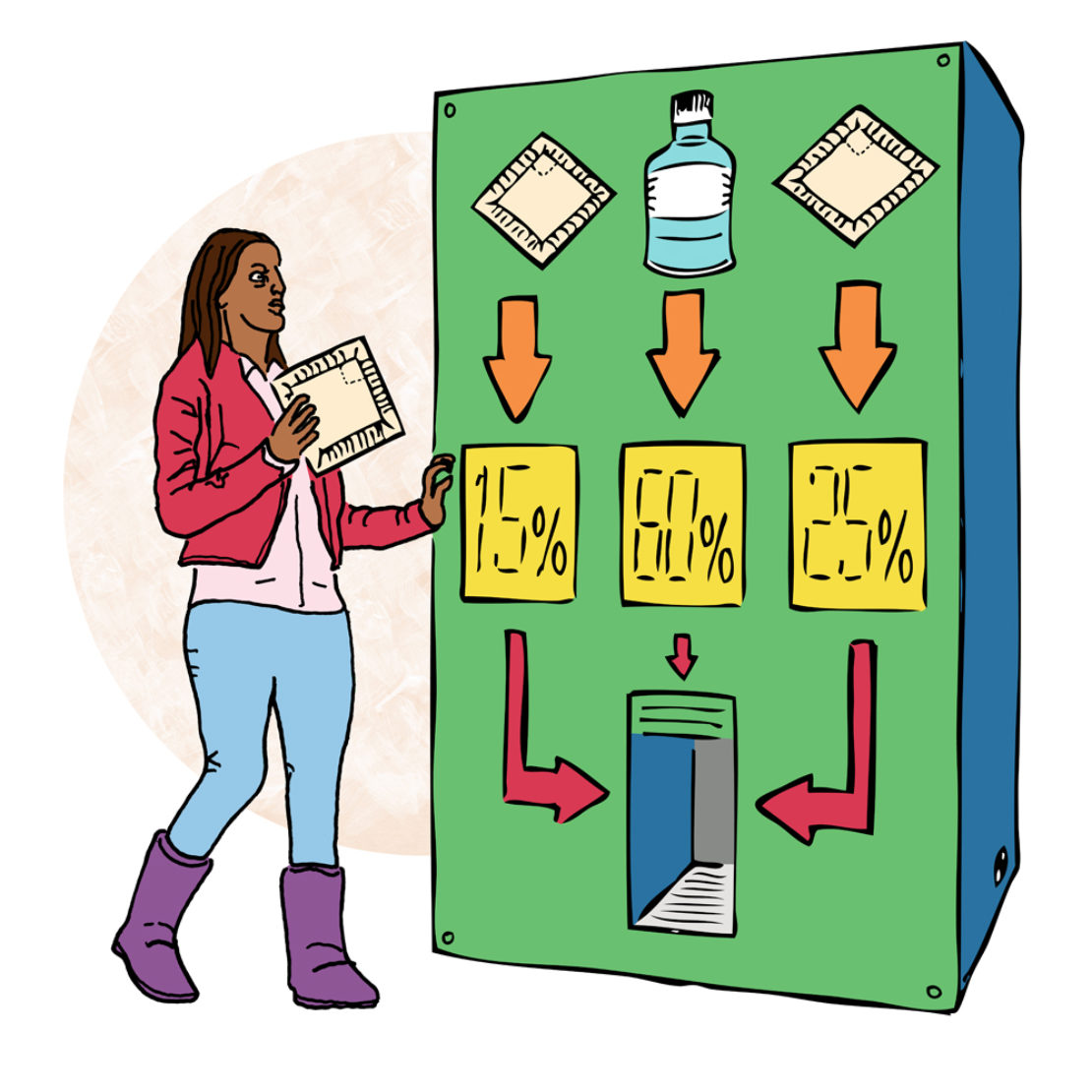Food hacking – opening minds and mouths to a new menu

Since October 2015, I have embarked on a personal dietary experiment. Around midday, Monday through Friday, I have stood in the lunchroom at Nesta (which publishes The Long + Short) and dutifully combined two scoops of a light beige-coloured powder and four scoops of water with a dash of cinnamon. While catching strange looks from my colleagues, I shake up this chalky concoction into what looks and tastes like pancake batter. My lunch du jour is Soylent, a 'nutritionally complete food product' engineered by Silicon Valley tech geeks for people with no time to prepare well-rounded meals, but with the desire to eat healthily.
In theory, Soylent and its rapidly emerging competitors such as Ambronite and Huel provide the right mix of proteins, healthy fats, oils, vitamins and minerals in a convenient powdered form – just add water. Some call it a lazy approach to nutrition; others see it as a consequence of our increasing obsession with productivity and efficiency, spurred by technology. For lack of an official name, I call it 'food hacking'. 2016 could be the year it reaches mainstream mouths.
Nutritional supplements and food hacking are not new concepts but they became imbued with much more potential in 2003, when the sequencing of the human genome was completed. By sequencing human DNA, scientists can identify specific markers in our genetic code and relate them to potential health risks, inherited medical conditions and responses to certain drugs.
Bespoke nutrition
23andMe, an American company founded in 2006, aims to accelerate genetic research by crowdsourcing; willing participants (myself included) submit their DNA to the company's database. According to my 23andMe results, I have an elevated risk of Alzheimer's disease, my ancestry composition is 35.1 per cent British and Irish, and I am genetically predisposed to being unable to taste certain bitter flavours.
This relatively recent scientific advancement has given us an unprecedented amount of information about what we're made of, so why can't it inform what goes into us? If we have the ability to analyse our DNA, and use that knowledge to adjust our behaviour, why can't the food we eat be hacked to make us fitter, faster and stronger?
Perhaps the logical extension of genotyping and food hacking is bespoke nutritional recommendations: combining DNA analysis with information about a person's lifestyle, diet, sleep, mental and emotional states. The technology for accumulating this data is already here: wearables and smart phone apps can know our habits and analyse our environments already, with increasing sophistication. I envision a near future in which everything we eat – powdered or solid, organic or synthetic, healthy or junk – is catalogued and the effects on our body are analysed, in real time, as we consume.
I envision a near future in which everything we eat – powdered or solid, organic or synthetic, healthy or junk – is catalogued and the effects on our body are analysed, in real time, as we consume
At the start of 2015, three American venture capitalist firms invested $20m (£13m) in Soylent. In his announcement of the investment, Chris Dixon of venture capital firm Andreessen Horowitz didn't mention the quality or convenience of the product but instead highlighted its online "community of people who are enthusiastic about using science to improve food and nutrition": an active discussion forum as well as a site for sharing recipes or hacks.
Specific products like Soylent may be a fad, like so many dietary and technological ones before it, but the concepts of hacking and open source intelligence applied to food are incredibly significant. The internet is rife with food-hacking websites, food hackathons are occurring all over the world, private companies and investors are funding development, and the media is catching on. Throw a couple of celebrity endorsements into the mix in 2016 and we could see a full-scale dietary revolution.
Transformative gastronomy
Food hacking will impact on everyone, not just the web-savvy or health conscious; it could lead to a systemic change in food production and distribution. If a nutrient-rich powder can be processed more cheaply and efficiently than, say, a frozen dinner or a McBurger, could it be used to end world hunger?
If said powder is vegan, NHS-approved, produced carbon neutrally and engineered to taste good, why wouldn't it be a standard item in every kitchen cupboard? I'm not suggesting all our future meals be in liquid form – cooking and eating conventional food has never been and will never be supplanted – but the implications of hacking our food and disrupting our food systems are truly world-changing, both for our own bodies and for the environment.
Food hacking may not sound, look or taste great yet but the movement will lead us to a better, healthier world. 2016 will be the year we open our minds and our mouths to a new menu.